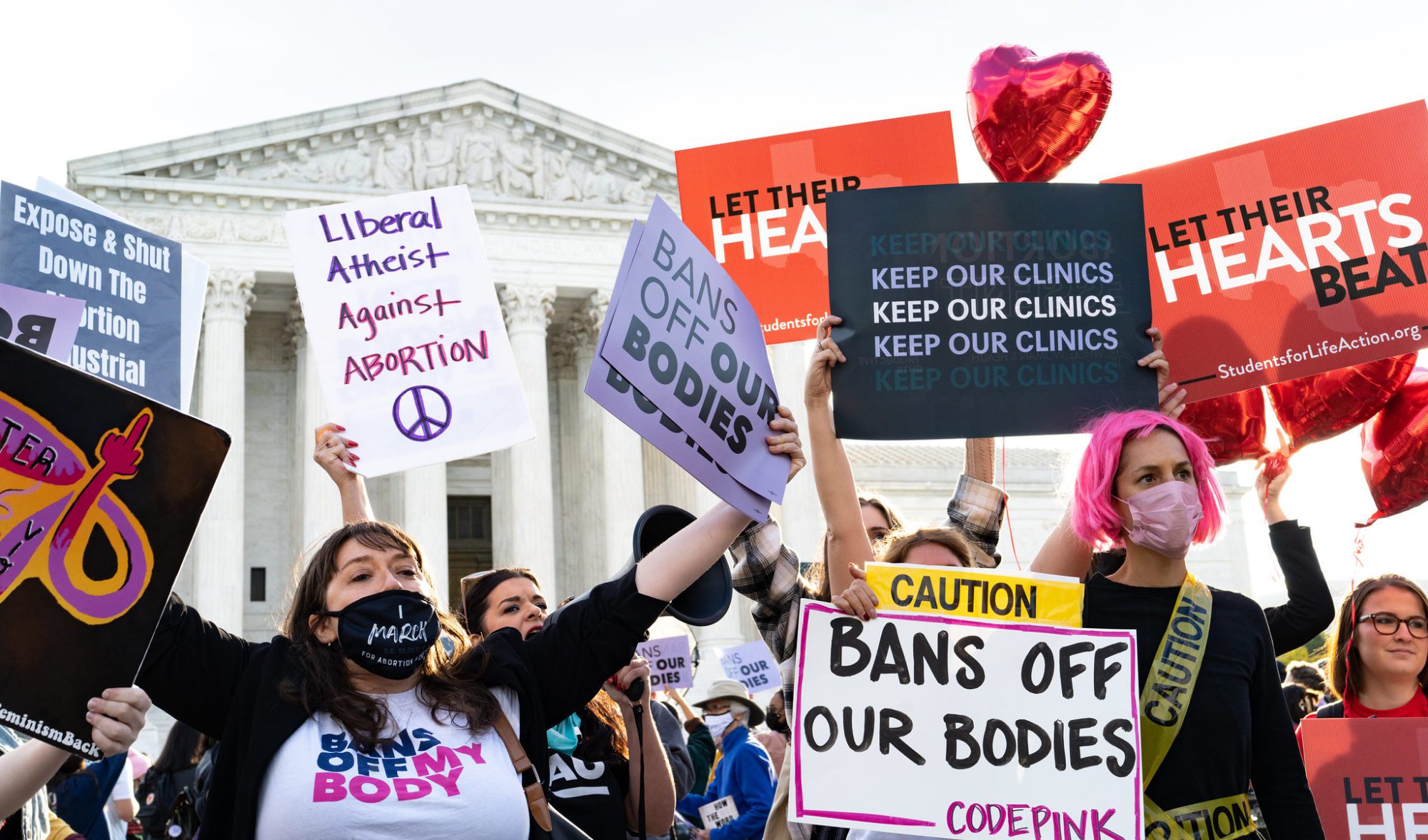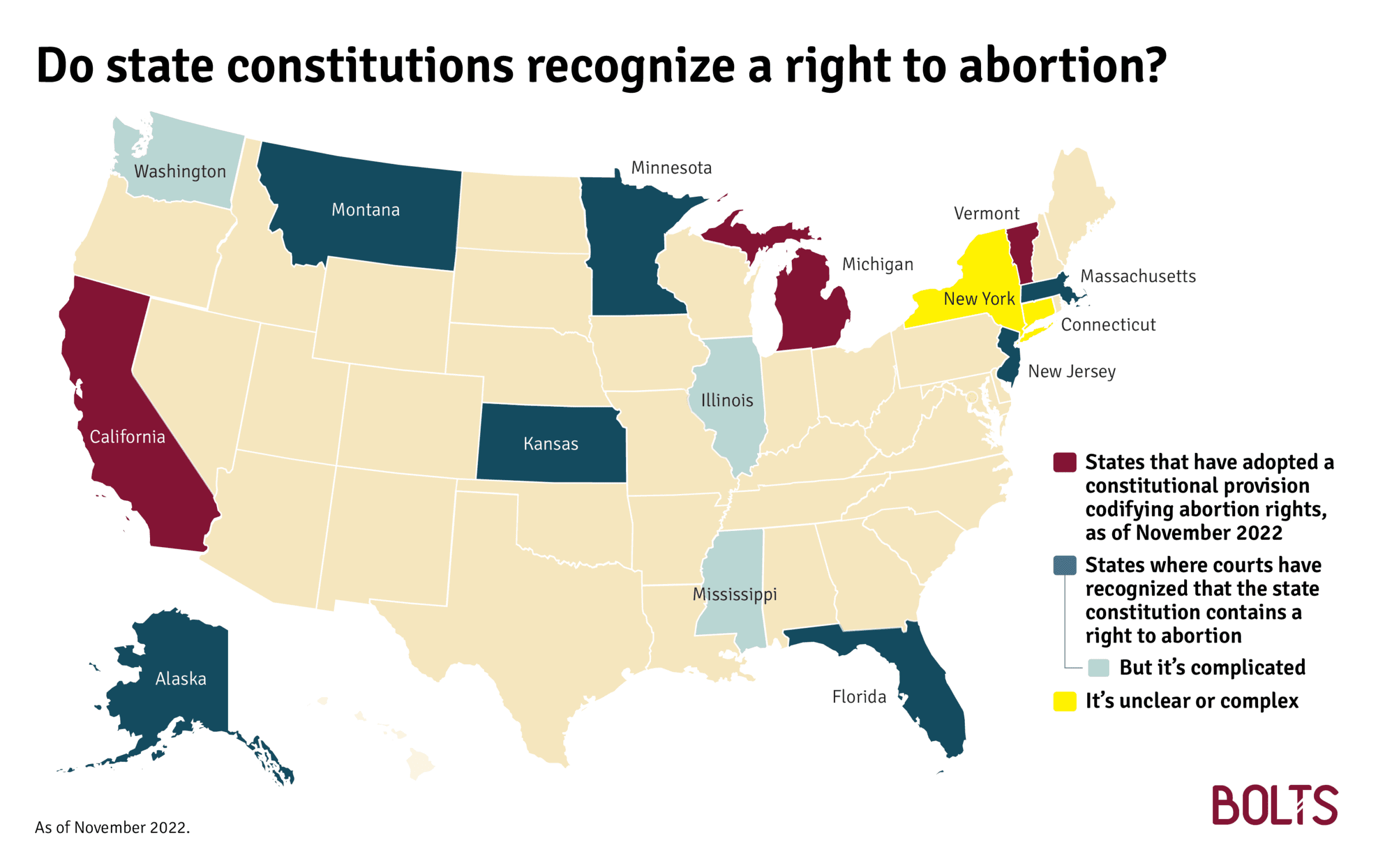Measures to Protect Abortion Rights Triumph on Tuesday
California, Michigan and Vermont became the first to explicitly codify the right to abortion in their state constitutions.
Quinn Yeargain | November 9, 2022


Voters in California, Michigan, and Vermont on Tuesday adopted constitutional amendments that enshrine abortion rights into their state constitutions. The referendums came in response to the U.S. Supreme Court’s Dobbs ruling, which in June overturned federal protections for abortion.
The result in Michigan will have the most immediate effects since, unlike California and Vermont, Michigan has a statutory ban on abortion on the books. Proposal 3, which affirms a “fundamental right to reproductive freedom,” passed on Tuesday, overturning the state’s abortion ban and protecting access going forward. ABC News called the race in favor of the measure which, as of publication, led 53 percent to 47 percent.
Meanwhile, California voters overwhelmingly to add a “fundamental right to choose to have an abortion” and a “fundamental right to choose or refuse contraceptives” to the state’s constitution. Vermont voters also approved language adding a “right to personal reproductive autonomy” to that state’s constitution by a wide margin on Tuesday.
Whether state constitutions protect abortion rights—and how state courts interpret those protections—has been a critical question in the aftermath of the U.S. Supreme Court’s decision to overrule Roe v. Wade. The conservative court’s ruling only concerned whether abortion rights were protected under the federal constitution, but each state’s constitution can set higher standards for the protection of individual rights and liberties. Additionally, though individual rights to contraception are currently recognized by the Supreme Court’s decision in Griswold v. Connecticut, many observers have speculated that the Court may overrule that decision, too. Accordingly, it is significant that all three constitutional amendments that passed tonight also recognize—explicitly or implicitly—individual rights to contraception.
An analysis published by Bolts in July found that a dozen state supreme courts have ruled that their states’ constitution recognizes abortion rights. But until Tuesday, no state constitution explicitly declared such a right; judges in those states relied on provisions that talked about a right to privacy or about due process. California, Michigan, and Vermont are the first three states to add provisions into their constitution that explicitly codify the right to an abortion.


They likely will not be the last, with Democratic governors around the country calling for similar amendments and with abortion-rights advocates motivated by tonight’s results.
In states with abortion bans, advocates have also turned to courts to challenge their legality under state constitutions, hoping that more judges might recognize abortion protections.
Tuesday’s elections decided the courts’ balance of power in populous states that may face showdowns over abortion rights. The GOP gained a new majority on the state supreme court in North Carolina, and narrowly retained its majority in Ohio; Democrats are favored to retain their majority on the Michigan supreme court. In another major race where abortion was on the line, Republicans also failed to take full control of the state government in Pennsylvania, another battleground on the issue; Governor-elect Josh Shapiro, a Democrat, favors abortion rights and would be poised to veto bills that carry restrictions.
Tuesday’s results build on the landslide in favor of abortion rights in a referendum in Kansas in August. Earlier this year, Republican lawmakers in Kansas proposed a constitutional amendment that would have effectively overruled a landmark decision by the Kansas supreme court in 2019 protecting abortion rights, but Kansas voters rejected that amendment.
Kentuckyians were similarly voting on Tuesday on a constitutional amendment that would have declared that their state constitution does not protect abortion rights, and just like Kansas they rejected the measure. The result is welcome news to abortion-rights advocates and opponents of the proposed amendment, which significantly outraised and outspent supporters. However, the failure of the amendment itself will not legalize abortion in Kentucky. Ongoing litigation at the Kentucky Supreme Court, which concerns whether the state constitution implicitly includes abortion rights, will ultimately determine the legality of abortion in the commonwealth.
Also in Kentucky, a conservative lawmaker who championed abortion restrictions in the legislature lost an election to join the state supreme court.
Montana decided yet another measure pertaining to abortion on Tuesday. Unlike the other referendums, this concerned a state statute that required medical care be given to any infant “born alive” after induced labor, cesarean sections, or attempted abortions. The bill was drafted to mirror model legislation advanced by national anti-abortion groups, and was condemned by abortion-rights advocates and abortion providers as addressing a non-existent problem—especially given the rarity of late-term abortions generally. The measure appeared to be failing on Tuesday night, but regardless would likely have little impact on the legality and availability of abortion in Montana.
Of Tuesday’s referendums, Michigan’s Prop 3 drew the most attention heading into Tuesday.
Passage of the measures in California and Vermont was never seriously in doubt given both states’ socially liberal bent. Both states enable abortion access, and the California Supreme Court has recognized an implicit state constitutional right to reproductive rights since the early 1980s. However, the addition of explicit constitutional protections further entrenches abortion rights in both states, and insulates them from the prospect of future supreme courts changing course.
Michigan, though, is more politically divided and Prop 3 faced a heavy opposition campaign. Attacks from opponents of the measure falsely argued that passage of the amendment would allow children to have access to “gender change therapy without parental consent,” a charge that appeared in television advertisements and was widely condemned as false.
The measure was also set to offset the status quo. The U.S. Supreme Court’s Dobbs decision “triggered” old statutes outlawing abortion in many states around the country. In some places, this meant returning to laws that were a century old—and in some cases, even older. Arizona returned to its 1864 ban, adopted when it was still a territory, and Wisconsin returned to its 1849 ban. In Michigan, the ruling threatened to reactivate the 1931 abortion ban, raising the prospect of widespread criminalization, even as some liberal prosecutors promised to resist it.
But the ban was blocked by state courts, with the state court of appeals halting the law’s enforcement and the state court of claims holding that it ran afoul of the state constitution. The issue was still pending before the state court of appeals, however, and the passage of Proposal 3 all but guarantees that the 1931 ban will be held unconstitutional.
With the amendment’s passage in hand, abortion will remain lawful in Michigan—and protected as a “fundamental right,” meaning that state courts will critically evaluate infringements on the right.

